|
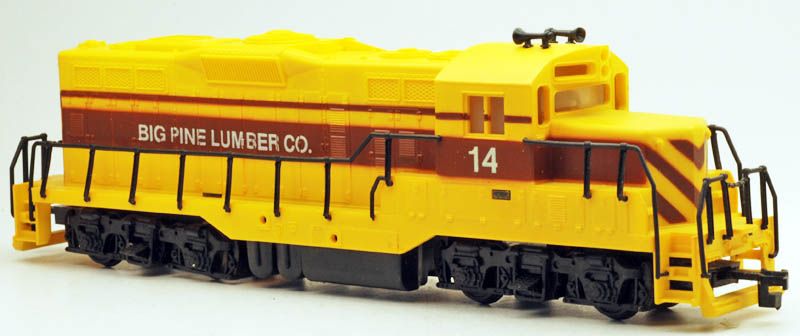
GP9 Diesel Locomotive
Big Pine Lumber
No. 6111-7 -1975 Release
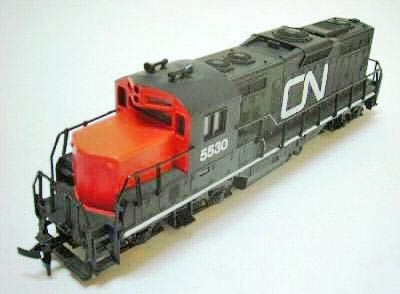
GP9 Diesel Locomotive
Canadian National
No. 611372 -Canadian Release
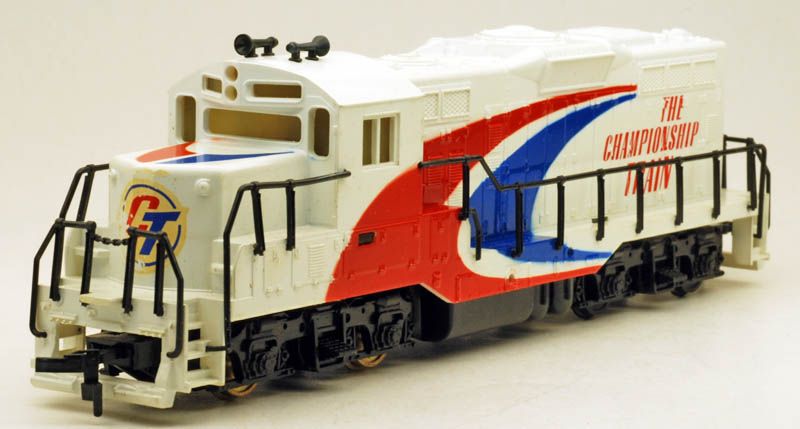
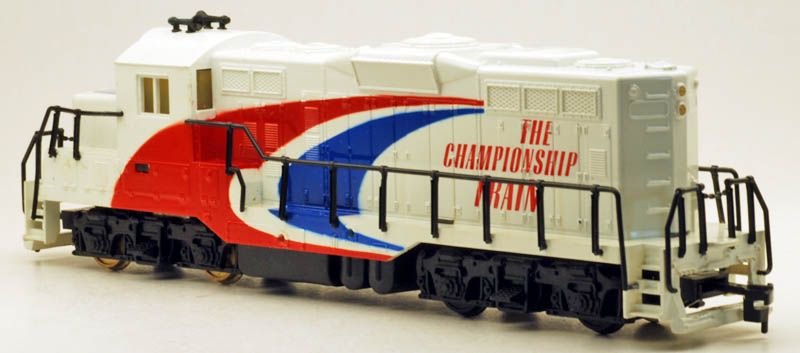
GP9 Diesel Locomotive
Championship Train
No. 6113-7 -1975 Release
GP9 Diesel Locomotive
Chessie
No. 6113-6 -1974 Release
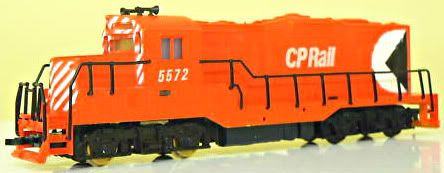
GP9 Diesel Locomotive
CP Rail
No. 611373 -Canadian Release

GP9 Diesel Locomotive
Ontario Northland
No. 611371 -Canadian Release
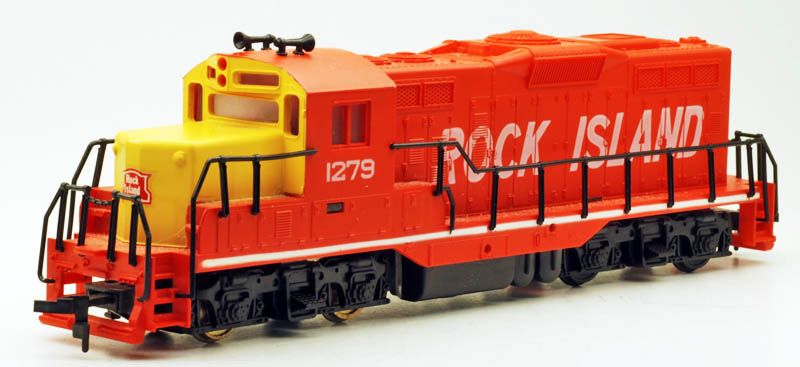

GP9 Diesel Locomotive
Rock Island
No. 6113-5 -1974 Release
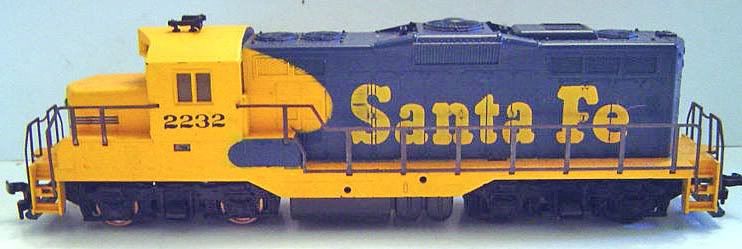

GP9 Diesel Locomotive
Santa Fe
No. 6113-4 -1974 Release

|
The COX GP9 is a low-nose example of a popular EMD diesel locomotive built in the 1950s for a variety of North American railroads.
Though many roads operated GP9s that had a low nose, most were "chopped" from original high-nose examples and thus tend to
have spotting marks unique to the railroad's shops that performed the work. EMD did offer a low-nose GP9 model, but it was
produced in this style in fairly small quantity making this COX model correct for only a few prototypes. Cox introduced this
model at 1974's Chicago Hobby Show.
The tool-and-die work on COXs GP9 closely resembles the original Athearn high-nose GP9. As is done frequently in the model
train business, the Athearn GP9 likely served as the basis for COX's model. Evidence of the Athearn model serving as the
inspiration may be also seen in the wider than prototype long-hood.
The June 1975 issue of Railroad Modeler magazine reviewed COX's GP9. The review was mostly positive, stating that COX appeared
to be trying to satisfy both the toy train and modeler market with this offering. Additional comments included the reference
to the unique status of a low-nose or chop-nose GP9 as a factory offering from EMD. Phelps-Dodge and Southern Pacific are
provided as two known examples of roads that originally purchased GP9s from EMD with the low-nose option. The original retail
for this model is provided in the Railroad Modeler review as being $10.95.
|
|
Canadian GP9 releases included a trio of roadnames not found in the American Cox line: Canadian National, CP Rail, and Ontario
Northland. The Canadian stock numbers for the U.S. GP9 models differed from their American counterparts. In Canada, the
Championship Trails GP9 carried No.611370; Chessie System was No.611360; Rock Island was #611350; Santa Fe was #611340; and
Big Pine Lumber was #611170.
One variation known in the Cox GP9 production is the handrails. Early examples included flat
metal handrails, while later models were produced with flexible plastic handrails.
|
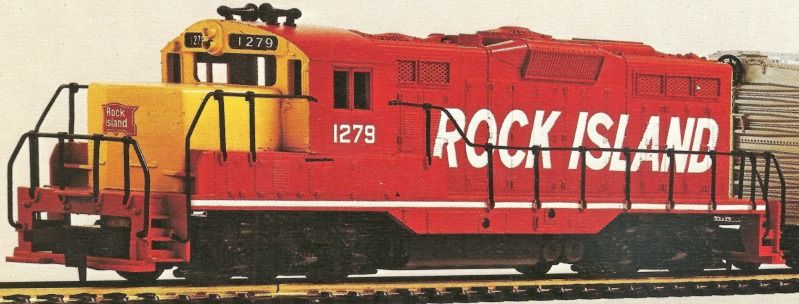
|
For its 1974 Cox catalog appearances, the GP9 models on display are hand-built examples. Compare the Rock Island GP9 presented
above to the Hong Kong-made regular production example presented further up this page. Part of the fun of old product catalogs
is spotting the pre-production or one-of-a-kinds used for illustrations before regular run models were available.
|
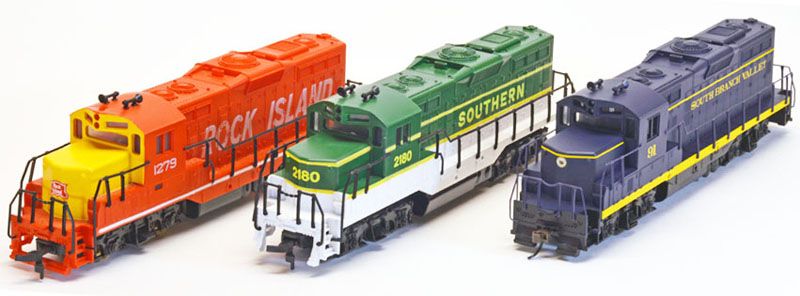
|
Two close cousins exist to COX's GP9. Model Power has offered a GP9 that appears very similar to the COX tooling. This model
includes an open section to the lower pilots and no tab slots on the side, as it features a full metal underframe.
Walthers offers a Trainline GP9 that utilized the COX model as its basis. Walthers has added improvements filling in the holes
on the side of the shell that the underframe snapped into on the original COX model, plus provided more complete front and
rear pilots. Thinner flexible and more accurate appearing handrails are also an enhancement on Walthers' Trainline GP9 releases.
Walthers also includes a very good drive for its GP9..
|
|

